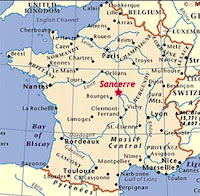This month has been a good month for wine. I didn't get to any wineries for tasting like I had planned, but maybe next month! ZAP's Zinfandel festival came and went. I'll have to do some research and read about this year's event. Hopefully I can attend next year!
Here are some possible wineries I'd like to visit in February:
- Bogle Winery, just South of Sacramento, is having their annual Port Weekend on February 9th and 10th.
- On the same day I could meet more winemakers by attending the Amador Vintners Association Behind the Cellar Door event. Thirty different Amador County wineries will be on hand "for a winter wine extravaganza of barrel-tasting, great food, live music and entertaining seminars and demonstrations."
The Midtown Winers, a monthly wine tasting I attend, will be having a Cabernet Sauvignon tasting next week. We are trying to bring wines made outside of California to give us an idea of how the wine is made outside of Napa Valley. I'm going to bring a Bordeaux blend from 2005.
I contributed to my first Wine Blogging Wednesday this month and hope to contribute to my second one in February. The wine won't be a challenge, an Italian red, but the format is going to be rough: describe the wine in seven words! The description written by the host, Spittoon, says: "The finished tasting note must make sense, be grammatically correct(ish), punctuation will help of course. The wine name, type, producer, vintage do not have to be included in the 7. But a reference to aroma, flavour, length, food matching etc etc should be considered. Inventiveness is the key. I'm going to try my first Aglianico but this may be a difficult exercise!
I'll be writing a review for the first Wine Book Club book, "Vito Italiano." I'm enjoying reading this book and hope I can do it justice. I found out something else about Italy, but not in the book. My grandfather came over from Italy when he was 16. That I already knew. But I learned that he used to live in a town called Lucca in Tuscany. One of my memories of my grandfather was sitting a the dinner table and him drinking some Chianti from a regular drinking glass. I wonder if he ever worked at a vineyard. I'm going to have to learn more!
February looks to be another promising wine month. I've enjoyed my first month of blogging and it has really helped me learn more about wine. I've discovered a lot of cool wine blogs and corresponded with several new bloggers and wine lovers. I'm definitely getting more out of blogging than I'm putting in. Thanks if you've posted a comment; it's really cool to read them. Hope your January has been a good one!























